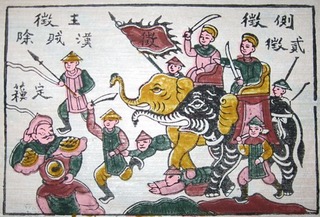In Saigon, Vietnam, a celebration was organised to commemorate two sisters who, in 43 AD, led an uprising to banish their Chinese occupiers.
The Trưng sisters hailed from a tribal, Lạc Việt aristocratic family in a district that is now part of modern-day Hanoi. When Trưng Trắc’s husband was executed for opposing the Han regime, she and her sister, Trưng Nhị, organised a rebellion with the Lạc Việt people against their Han oppressors. Initially successful, the rebellion forced the Chinese to retreat, and the sisters were revered and made Queens.
However, within a year, Chinese forces invaded northern Vietnam again. Despite Vietnamese efforts, they could not hold off the invading forces and were brutally suppressed. Thousands were beheaded, and several hundred families were sent to China. Legend has it that the sisters drowned themselves in the Hát Giang River (now Sông Đáy River) when capture seemed inevitable. However, they were captured, beheaded, and their heads were sent to the Han Court in Luoyang.
A Vietnamese proverb, ‘Giặc đến nhà, đàn bà cũng đánh’, meaning “When the enemy is near, even the women will fight,” emerged from this historical event. Many temples are dedicated to their memory and an annual holiday commemorates their deaths.

